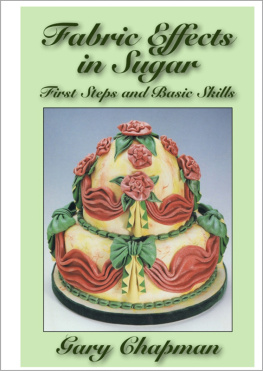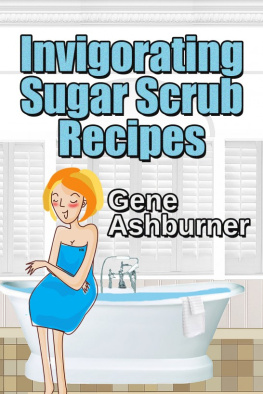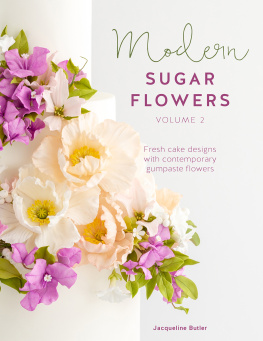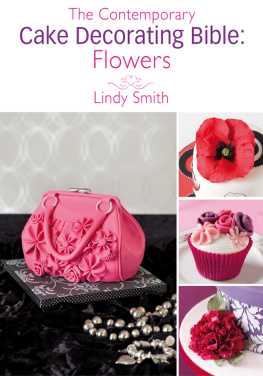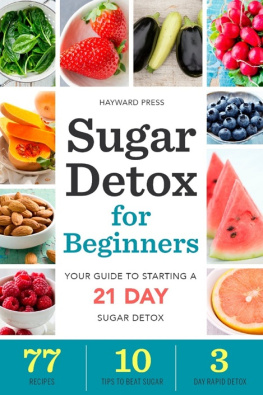Chapman - Classic fabric flowers in sugar: fabric effects in sugar
Here you can read online Chapman - Classic fabric flowers in sugar: fabric effects in sugar full text of the book (entire story) in english for free. Download pdf and epub, get meaning, cover and reviews about this ebook. City: United Kingdom?, year: 2015, publisher: Edditt Publishing, genre: Home and family. Description of the work, (preface) as well as reviews are available. Best literature library LitArk.com created for fans of good reading and offers a wide selection of genres:
Romance novel
Science fiction
Adventure
Detective
Science
History
Home and family
Prose
Art
Politics
Computer
Non-fiction
Religion
Business
Children
Humor
Choose a favorite category and find really read worthwhile books. Enjoy immersion in the world of imagination, feel the emotions of the characters or learn something new for yourself, make an fascinating discovery.
- Book:Classic fabric flowers in sugar: fabric effects in sugar
- Author:
- Publisher:Edditt Publishing
- Genre:
- Year:2015
- City:United Kingdom?
- Rating:4 / 5
- Favourites:Add to favourites
- Your mark:
- 80
- 1
- 2
- 3
- 4
- 5
Classic fabric flowers in sugar: fabric effects in sugar: summary, description and annotation
We offer to read an annotation, description, summary or preface (depends on what the author of the book "Classic fabric flowers in sugar: fabric effects in sugar" wrote himself). If you haven't found the necessary information about the book — write in the comments, we will try to find it.
How to create a range of afbric effects in sugar, including drapes, hangings or tails, bows, borders and flowers.
Classic fabric flowers in sugar: fabric effects in sugar — read online for free the complete book (whole text) full work
Below is the text of the book, divided by pages. System saving the place of the last page read, allows you to conveniently read the book "Classic fabric flowers in sugar: fabric effects in sugar" online for free, without having to search again every time where you left off. Put a bookmark, and you can go to the page where you finished reading at any time.
Font size:
Interval:
Bookmark:

Fabric Effects in Sugar
First Steps and Basic Skills
How to Create a Range of Fabric Effects in Sugar,
Including Drapes, Hangings or Tails, Bows, Borders and Flowers
by Gary Chapman
First published in 1993 by Gary Chapman as Fabric Effects in Sugar: Book One
Copyright Gary Chapman, 1993
This revised, new, ebook edition published 2012
Copyright Gary Chapman, Edditt Publishing, 2012
All rights reserved. No part of this publication may be reproduced, stored in a retrieval system, or transmitted in any form or by any means, electronic, mechanical, photocopying, recording or otherwise, without prior written permission of the publisher/author.
Photography by Alister Thorpe and illustrations by Rob Turner

www.eddittpublishing.com
Examples of Various Fabric Effects in Sugar
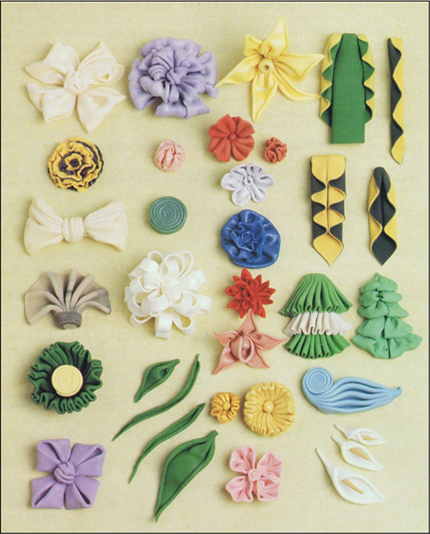
Introduction
Fabric Effects in Sugar: First Steps and Basic Skills aims to provide an introduction to the use of sugarpaste (rolled fondant) as fabric to decorate cakes with effects such as the drape, hangings or tails, hinges (rosettes, bows, ribbon cockades) and a variety of fabric flowers, leaves and borders. These ideas present a different and totally new approach to decorating cakes. Since I first introduced them in the early 90s, they have gradually been adopted and are now used extensively.
The various fabric effects described here provide a simple and quick alternative to the usual methods of cake decorating and yet at the same time produce a stylish and attractive finish. I have also developed several varieties of fabric flower offering a quick alternative to the creation of the wonderful, yet elaborate and often time-consuming arrangements of sugar flowers that we have become so accustomed to making.
Fabric effects can be used in many different ways and for every conceivable type of celebration cake. They can be the sole means to decorate a cake or successfully combined with various other cake decorating techniques. There is also no need to use any non-edible products such as real ribbons, wires or stamens. My ideas come from a variety of sources. Since I am adapting and recreating real fabric effects, I gain enormous inspiration from observing real curtain and drape effects, but also objets such as hats and fashion creations. I am influenced by everything around me and I always carry a sketchbook to jot down ideas and shapes. However, all ideas must be adapted and altered to suit the medium of sugar and at the end of the day, it is imagination and the fun of experimentation that counts.
I do hope that you will be able to share my delight at creating fabric effects and the great opportunities for cake decorating that these simple techniques can offer. Enjoy!

Hints and Tips
The mixture used for all fabric effects is comprised of 50% sugarpaste (rolled fondant) and 50% flower paste or gum paste. This mixture works best for me and has a good degree of elasticity, although in recent years I have increased the ratio of flower paste. Other combinations of gum paste can be used. When creating delicate and miniature fabric effects, it is best to use just flower paste.
Think carefully about the concept of your cake. I find it useful to sketch out my design to make sure Im happy with it before going ahead. Colour is important and I aim to harmonise colours with a light and dark contrast between the cake surface and the fabric effects and also within the fabric effects themselves. This helps to accentuate and highlight the design while providing a good contrast. To achieve the required colour, a range of paste food colours is used.
Pin rolling within the text means using a rolling pin to roll out paste whereas finger rolling means to physically roll up the paste into a cylindrical shape with your fingertips. When pin rolling a sheet of paste, try to handle it with your fingertips as little as possible. As a result of hand temperature and humidity, stickiness can be a problem. I keep a bag of icing (powdered) sugar (in muslin or cloth or a nappy liner tied at the top) handy to dab the sheet of paste on both sides to prevent any stickiness developing and remove any excess with a large paintbrush. Besides dusting, once the sheet has been cut to shape (and if it is still a little sticky), you can leave it for a minute or two to dry slightly before you commence pleating or folding.
It is easiest not to lift up and turn the sheet upside down because usually the underside will be sticky and may adhere to your rolling pin. Instead pin roll a little, then lift the sheet and rotate on the board and start again. This also enables you to gauge the thickness of the sheet. If, for whatever reason, the paste mixture has dried out or become slightly brittle, simple knead in some white vegetable fat to restore its consistency.
Pearl dusting powders (pearl in the text) give a wonderfully satin/fabric effect sheen and are the perfect combination for many fabric effects. Dust each item prior to affixing on the cake.
To shape and form the fabric-effect flowers, I have used commercially available flower formers, such as Cel Shapes; to adjust the shape of petals and bows, small pieces of foam or rolled-up kitchen paper towel have been used.
Water or sugar glue can be used to secure the fabric effects to cakes. Sugar glue is a very useful sticking agent and it is simple to make. Crumble small pieces of sugarpaste (rolled fondant) into a cup and add some water. Place in a microwave on high for a few seconds until dissolved. You can adjust the density and thickness of the glue by adding more paste, if required.
It is very difficult to stick any of the fabric flowers straight onto the surface of the cake. The best method is to indent the cake surface with a small depression using a ball tool, add sugar glue and the flower (use a paintbrush to secure in place).
Ideally, indent any depressions in the cake surface while the sugarpaste (rolled fondant) coating is still soft. This means that the design of the cake and positioning of any flowers must be worked out beforehand so that you can work quickly once the cake has been covered.
If the sugarpaste (rolled fondant) coating has dried out, it is still possible to create the depressions but just be careful the edges do not crack. If you create a small depression and then cut out a larger area with a scalpel, this usually avoids any cracking.
I like to complete a cake by covering the cake boards with sugarpaste (rolled fondant) and in many instances this surface is painted in exactly the same way as the cake itself. For me, it adds the perfect finishing touch and creates a far greater impact than simply leaving the cake on an uncovered silver board. I also like to finish off the cake by gluing ribbon with a Pritt stick to the edge of the board.
The actual dimensions of the cakes and boards photographed and the paste mixture requirements to create the fabric effects on each cake are given. All paste quantities are approximate and slightly over-optimistic! The cakes in this book have been specifically designed to illustrate and explain how to create a range of fabric effects. All my ideas can be used in different ways and adapted for your own use.
Next pageFont size:
Interval:
Bookmark:
Similar books «Classic fabric flowers in sugar: fabric effects in sugar»
Look at similar books to Classic fabric flowers in sugar: fabric effects in sugar. We have selected literature similar in name and meaning in the hope of providing readers with more options to find new, interesting, not yet read works.
Discussion, reviews of the book Classic fabric flowers in sugar: fabric effects in sugar and just readers' own opinions. Leave your comments, write what you think about the work, its meaning or the main characters. Specify what exactly you liked and what you didn't like, and why you think so.

